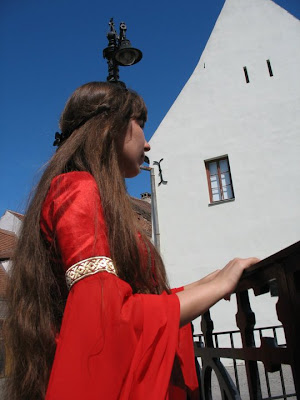IAR 80.
Builder Ion Grosu
Manufacturer Industria Aeronautică Română
Production 1939 - 1943
Lenght 8,90 m
Wing Span 10,50 m
Hight 3,60 m
Wing Surface 15,97 m²
Engine IAR K14-1000A – 14 cylinders double star engine
Power 764 kW / 1025 HP
Maximum Speed 550 km/h at 3970 m (4th place in the world at that time)
Combat ceiling 10 500 m
Autonomy 940 km
Weight (empty) 1780 kg
Weight (flight) 2550 kg
Crew 1 Pilot
Armament 4 - 6 MG
Armament (bombing) 450 Kg.
In April 1939 this plane had it’s maiden flight as an unpainted prototype, that had in it’s cockpit the test pilot Captain Dumitru “Pufi” Popescu. The first prototype had an open cockpit and two Browning FN 7.92 mm machine guns strapped on it’s wings.
On 18th of December 1939 the Romanian government asked from the manufacturer 100 planes, and on 22nd of August 1940 for another 100 pieces.
The standard monoplane was equipped with a 960 HP IAR k-14 III C 36 double star engine (a Romanian version of the Gnome – Rhone 14K Mistral Major). The cockpit was moved to the front and the wingspan and the total length were increased. The first 20 planes were equipped with 4 Browning FN 7.92 mm machine guns that had around 2400 rounds of ammunition.
The 50th plane was send back to the IAR – Brasov for and was retrofitted with a better 1025 HP IAR K-14 1000A engine, 2 more Browning FN 7.29 mm machine guns , increased armor for the pilot and a Goerz reflector targeting system. After a short while these modifications were introduced on the manufacturing lane and so appeared the IAR-80A.
The dive bomber
In 1939 Germany rejected Romania’s request for the acquisition of 50 Junkers – Ju 87B planes. In response to this action and because the conditions from the front line required it, IAR – Brasov mounted on the 75th IAR – 80 plane, a 225 kg bomb launcher, and an automated system that helped the plane straighten itself after a dive. The new model was christened IAR – 81 and remained in history as BoPi (Bombardier in Picaj = Dive Bomber). 15 planes were made and delivered in October 1941 to the 8th Fighter’s Group
A Consolidated fighter plane
Initially the planes with the serial numbers from 212 to 230, got out from the manufacturing line under the name of IAR – 81, but were later renamed as IAR – 81B as they had structural reinforcements and 13.2 mm machine guns. 10 planes were made under the name of IAR – 81 and got shipped out in September. These planes got equipped either with 50 kg bomb fixtures or with 100 liters auxiliary fuel tanks, and to help the plane straighten itself even more after a dive, the flaps opening was enlarged to 75 degrees. The following models had their 13.2 mm machine guns replaced with the better 20 mm Icaria/Oerlikon twin cannons that included a pneumatic arming system, and had installed on them a dust filter to the air intake. All these modifications were made for the number 241 ship which became the first of the IAR – 80C model and was intended at first as a diver bomber under the name IAR – 81B, but was later converted to a defensive fighter plane.
The 1st of August 1943 is marked on the history pages as one of the greatest days for the Romanian fighters. Operation “Tidal wave” brought the allies some of the most costing air fights from the whole war. The allies sent 178 B-24s with a total of 1,751 aircrew-men out of witch 53 planes and about 660 people will never return home. Due to a lack in logistics, the “masterminds” of this attack ordered the pilots to engage the refineries of Ploiesti from a low altitude making this an almost suicidal run. IAR-80, Me 109 and heavy anti-air defenses met the oncoming bombers making them pay dearly for only a few hits on their intended targets. After the raid, the refineries began working at a better rate than they worked even before the raid, as to show the allies the fact that Operation Tidal Wave was not as successful as they intended it to be. (World of aviation no 2; Nat Geo, No. 92, December 2010; http://en.wikipedia.org/wiki/Operation_Tidal_Wave)
The IAR-80 plane was my very first model. I used a 1/72 scale model from “PARC MODELS” and in the following pictures I’ll show the end result. Even though it’s my first attempt at anything like this and even though I used a normal hand brush, I’m proud of the way it came out in the end.



































